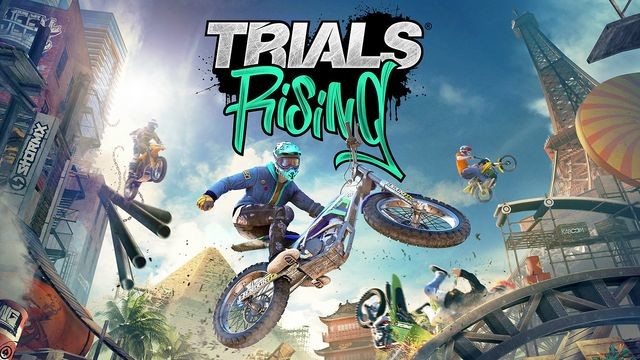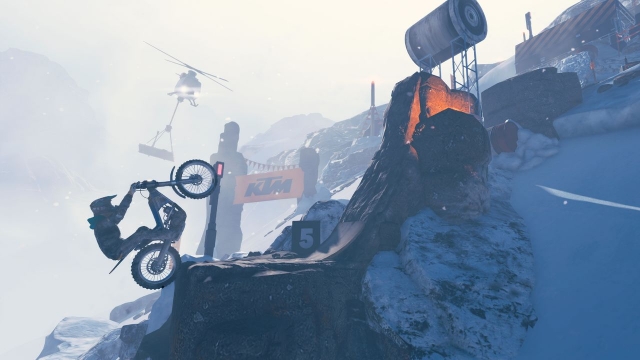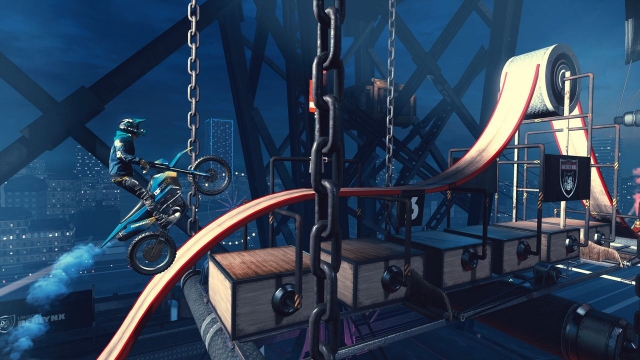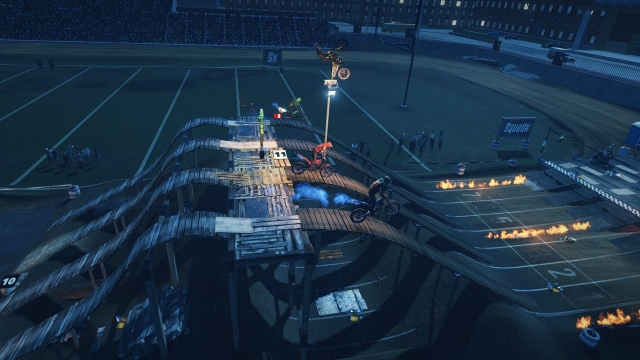Trials Rising

Since 2009, the Trials series has been the go-to franchise for stunt-based motorcycle action. With Trials HD becoming something of an underground sensation on XBLA and Trials Evolution bringing things further along with a greater variety of stunts and out-of-this-world creation tools. Trials Fusion brought the series to Sony’s platform for the first time and allowed users to enjoy a genuine Trials experience instead of the Urban Trial experience, which attempted to replicate the same concept in a more realistic cityscape setting. A mobile release hit in 2014, which winds up having a lot of influence on this game, while Trials of the Blood Dragon offered up a silly neon-infused side game across all console platforms in 2016. It was the most absurd-playing and the only one with a real story to it.
Trials Rising does away with the goofy stuff from that game and brings the core game design closer in line to what was seen in both Trials Frontier and Fusion. The futuristic setting of Fusion is gone, but with it is more of a real-world setting almost like Urban Trial, but with a more backwoods feel. The core gameplay is the same as ever, so you still need to be quite careful in your movements. The environment shift to a realistic setting helps keep things fresh and the increase in user-friendliness in the gameplay is nice.
The series used to just throw you right into the thick of things and that didn’t help anyone. When you have a physics-heavy game like this, you need to make sure players understand the stakes. Properly controlling your bike’s positioning and carefully monitoring your speed alongside your exact angle with the environment isn’t easy to learn in theory – let alone in execution. Fortunately, Rising goes through a fairly organic tutorial that explains things track setup by track setup and explains the skills you will need for that particular set of tracks.
This approach allows the player to be drip-fed information and core mechanics without being overwhelmed. Every skill you need for a given stage is gone over beforehand – just not in the exact same order as you’ll need. There may be a section later where you need to avoid your gut instinct of going forward and instead stay still and let part of the stage rise up. This exact thing isn’t taught, but the idea of being patient is and that should stay in the player’s mind at all times. Patience is a big part of excelling in this game and trying to rush through a stage will only result in disaster.
Being careful is the only way to truly play the game and do well. This means you need to keep your speed optimal and that may come through trial and error. Going quickly up a hill may lead to an area where you need to do a bit of jumping, and going too quickly will send you sailing off the end or into a wall. Sudden changes in direction can also come up – so you might wind up zooming to the right only needing to suddenly put your bike into a vertical angle and needing to roll backwards to then roll into a loop to go forward. There’s a lot of complexity to the environments and you will need to think logically in order to succeed when things get changed up without notice.
Success isn’t just a matter of getting from the start to the finish, but also based on new in-game contracts from your teams, which are basically just replacing the old objectives from past games. Most objectives have you winning in a certain time, but unlike past games, you can’t easily restart the whole event when you know you won’t win. You can reset from your last checkpoint, which is good if you have one area you struggle with, but retrying can only easily be done by going back to the map screen – so it’s far more time consuming than it needs to be.
One part of the presentation that definitely hurts is the mobile influence of Frontier permeating the whole game. Now that game felt a bit cheap for having other characters interact with you in still shots – but it was a free-to-play mobile game, so it was kind of all right. This is a fairly full-featured release with a premium price tag on it for a series that has usually been on the lower-end of digital-only pricing, and you still have the same static images representing people in the world. As a result, the world itself has this sense of scale that was lacking in the first entries – but still comes off as hollow. None of the characters really stand out or need to even be different since they’re all just dumping objectives at you. Pilotwings did about the same thing, but at least gave the cast slightly different personalities and that was also a launch game from 1991 – so there’s work to be done when it comes to using characters in this world.
Trials Rising controls the same as prior games did, and as a result, you’ll want to make sure your controllers are in great shape because they’ll be put through their paces. On the PS4, Xbox One, and PC, make sure your triggers are perfect and with the Switch, things are a bit different. Instead of analog buttons, you have pure digital, so speed is gauged by how long a button is pressed and that can change your timing up a bit. You can still go through stages, but there’s a tad more of a learning curve to mastering the controls.
Visually, Rising looks better than the other games in some ways as environments have more detail, but still isn’t a jaw-dropping experience. That’s probably a good thing because when the screen gets too busy like it did with the neon-soaked world in Trials of the Blood Dragon, it can be tough to focus on the task at hand. Everything in the game looks fine for what it is with environments looking good, but never exceptional. Character models also have a problem where textures can pop-in oddly after an event is completed and it just looks jarring.
Trials Rising has a punk-heavy soundtrack that both fits its action and also feels a bit out of date too. It’s almost charming with how much the soundtrack keeps with the late ’90s “XTREME” movement. Hearing Guttermouth here just made me think of how perfect they would’ve been in Crazy Taxi, and there is still some original music to be had as well. The soundtrack itself isn’t bad, but it doesn’t get mixed up enough during the action – so if you’re repeating stages a lot, expect to hear the same songs over and over.
Trials Rising is a mixed bag of an experience that still manages to deliver a ton of thrills in spite of some flaws. The F2P mobile elements feel completely out of place, as does the awful attempt at world-building. The series CAN do plot right, as Blood Dragon showed, with over the top goofiness. This is a series of racing-related events alongside some tricks at times and the game as a whole is a physics showcase. It’s the best-playing entry in the series so far, with a lot of robust tracks, but the experience is marred. It’s a recommended purchase for veterans, but newcomers are better-served by getting one of the older and far less expensive entries to see if you like what the series has to offer.
Reviewed By: Jeremy Peeples
Publisher: Ubisoft
Rating: 80%
——————————————————————————–
This review is based on a digital copy of Trials Rising for the Xbox One provided by Ubisoft.
 Game Over Online
Game Over Online











